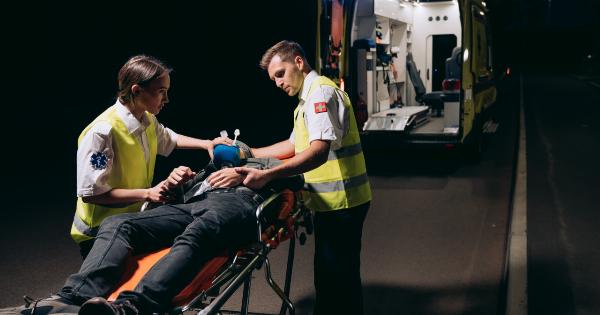Leg cramps often come unexpectedly, and they can leave you feeling incapacitated and in pain. They can occur while you are sleeping, sitting, standing, or even exercising.
They are a common problem, and most people will experience them at least once in their lives. Leg cramps occur when muscles contract and remain in a contracted state, causing intense pain.
Leg cramps can be caused by a variety of factors, including dehydration, electrolyte imbalances, muscle strain, lack of activity, and poor circulation.
They can also be caused by certain medications, including diuretics and high blood pressure medications. In some cases, leg cramps are a sign of an underlying medical condition, such as peripheral artery disease.
Symptoms of a Leg Cramp
The symptoms of a leg cramp are usually easy to recognize. They include:.
- Sudden, sharp pain in the leg
- Tightness in the leg muscles
- Difficulty moving the leg
- Tenderness in the affected area
These symptoms can be mild or severe, and they can last anywhere from a few seconds to several minutes. Some people may experience leg cramps frequently, while others may only have them occasionally.
What to Do When You Get a Leg Cramp
If you get a leg cramp, there are several things you can do to help alleviate the pain and discomfort:.
1. Stretch your leg muscles
When you get a leg cramp, stretching the affected muscles can help to relieve the pain. Gently stretch the leg by flexing your foot upwards towards your knee. Hold the stretch for a few seconds and then release.
Repeat this process several times until the cramp subsides.
2. Massage the affected area
Massaging the affected area can help to release the tension in the muscle and relieve the pain. Use your hands to apply gentle pressure to the area and knead the muscle. You can also use a foam roller or tennis ball to massage the area.
3. Apply heat or cold
Applying heat or cold to the affected area can help to reduce inflammation and relieve pain. You can apply a warm compress or take a warm bath to help relax the muscles.
Alternatively, you can apply a cold compress to the area to help reduce inflammation.
4. Stay hydrated
Dehydration is a common cause of leg cramps, so it’s important to stay hydrated. Make sure to drink plenty of water throughout the day, especially if you’re exercising or sweating heavily.
5. Take over-the-counter pain relievers
If the cramp is particularly painful, you can take over-the-counter pain relievers, such as ibuprofen or acetaminophen. These medications can help to reduce pain and inflammation.
6. Practice good sleep hygiene
Leg cramps often occur while you’re sleeping, so practicing good sleep hygiene can help to prevent them. Make sure your sleeping environment is comfortable and supportive, and avoid sleeping in awkward positions.
7. Use proper footwear
Wearing proper footwear can help to prevent leg cramps, especially if you’re exercising or on your feet for extended periods. Choose shoes that fit well and provide adequate support.
8. See a doctor if leg cramps persist
If your leg cramps persist despite trying these remedies, or if they are accompanied by other symptoms, such as swelling or numbness, you should see a doctor.
In some cases, leg cramps can be a sign of an underlying medical condition that requires treatment.
Preventing Leg Cramps
Preventing leg cramps is often the best way to avoid them and avoid the pain and discomfort they can cause. Some simple ways to prevent leg cramps include:.
- Staying hydrated
- Stretching regularly
- Maintaining a healthy weight
- Wearing proper footwear
- Staying active
By incorporating these habits into your daily routine, you can help to prevent leg cramps and stay healthy and active.






























